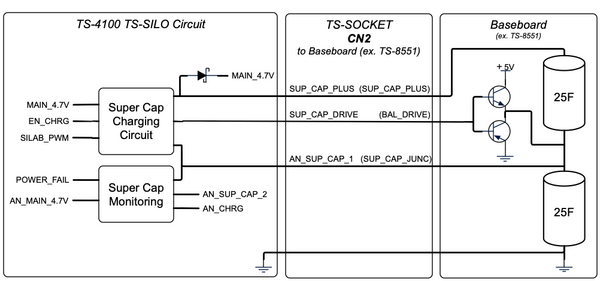TS-8554-4400
| WARNING: | This manual is incomplete and is subject to change without notice while the TS-4400 and associated companion products are in development. |
| Product Page | |
| Documentation | |
|---|---|
| Schematic | |
| Mechanical Drawing | |
| FTP Path | |
| Processor | |
| 300 MHz | |
| Vortex86EX | |
| X86 Architecture | |
| Processor Page |
Overview
Getting Started
Connect USB Console
Powering up
Boot Sequence
BIOS
Technologic Systems uses a combination of Coreboot and SeaBIOS provided from the CPU manufacturer to bootstrap into FreeDOS. Unlike many BIOS solutions, this system has no peripheral settings that require customization, allowing the downstream developer to move more directly into product development.
Backup / Restore
Creating A Backup or Production Image
Restoring An Image
Cross Compiling and Development
Accessing The FPGA
FreeDOS Development
FreeRTOS Development
Features
Battery Backed RTC
CPU
GPIO
ADC
Ethernet Port
FPGA
FPGA Registers
FPGA Syscon
Interrupts
LEDs
Sleep
SPI
TS-SILO Supercapacitors
XXX TODO: This section needs a generic graphic or one dedicated to the TS-4400.
UARTs
USB
XXX TODO: Is this a duplicate of section 7's USB section?
Watchdog
Specifications
Power Input Specifications
Power Consumption
Power Rails
MicroSD Connector
MicroUSB Connector
Power Connectors
USB Ports
Revisions and Changes
FPGA Changelog
Microcontroller Changelog
PCB Revisions
Software Images
Product Notes
FCC Advisory
This equipment generates, uses, and can radiate radio frequency energy and if not installed and used properly (that is, in strict accordance with the manufacturer's instructions), may cause interference to radio and television reception. It has been type tested and found to comply with the limits for a Class A digital device in accordance with the specifications in Part 15 of FCC Rules, which are designed to provide reasonable protection against such interference when operated in a commercial environment. Operation of this equipment in a residential area is likely to cause interference, in which case the owner will be required to correct the interference at his own expense.
If this equipment does cause interference, which can be determined by turning the unit on and off, the user is encouraged to try the following measures to correct the interference:
Reorient the receiving antenna. Relocate the unit with respect to the receiver. Plug the unit into a different outlet so that the unit and receiver are on different branch circuits. Ensure that mounting screws and connector attachment screws are tightly secured. Ensure that good quality, shielded, and grounded cables are used for all data communications. If necessary, the user should consult the dealer or an experienced radio/television technician for additional suggestions. The following booklets prepared by the Federal Communications Commission (FCC) may also prove helpful:
How to Identify and Resolve Radio-TV Interference Problems (Stock No. 004-000-000345-4) Interface Handbook (Stock No. 004-000-004505-7) These booklets may be purchased from the Superintendent of Documents, U.S. Government Printing Office, Washington, DC 20402.
Limited Warranty
See our Terms and Conditions for more details.
